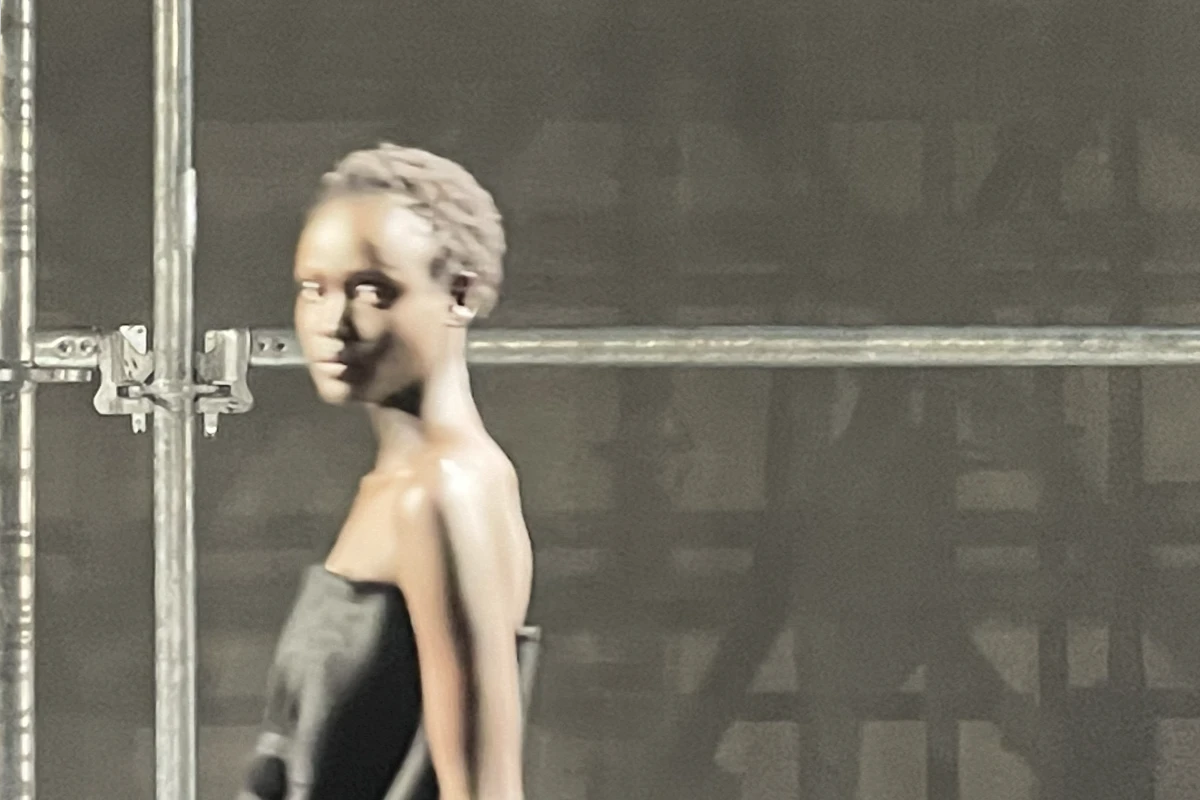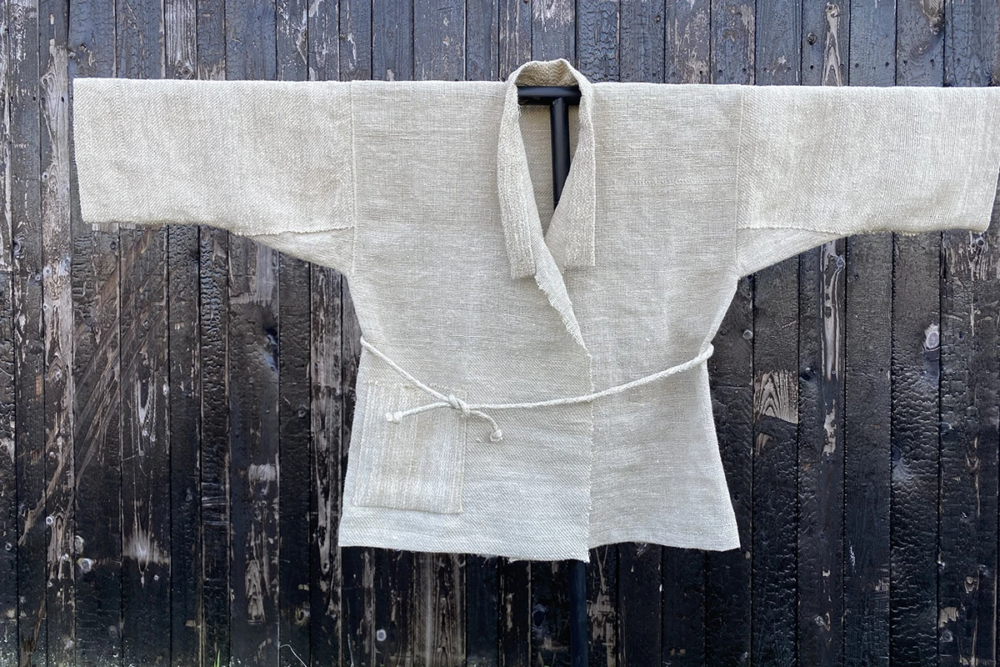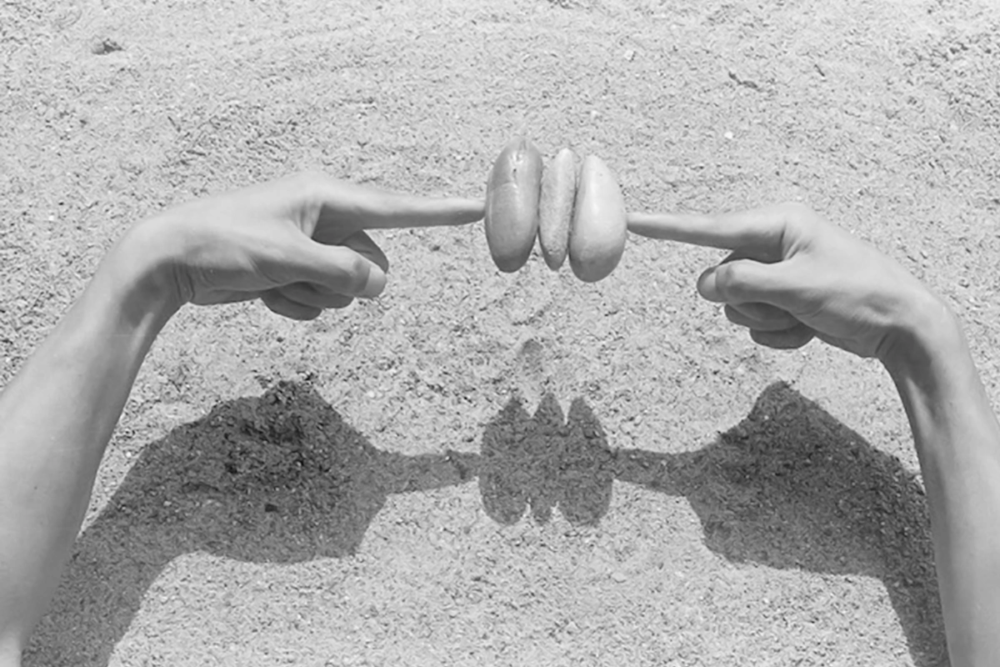
Milan Fashion Shows: annoyance at Dsquared2, applauses for Fendi
There are two circles in Milan: one, the lavish excess of Dsquared2, Cavalli, Dolce & Gabbana – the other one: respect and consistency of Fendi, Prada, Armani
A Riviera in the Gaza Strip, the Dsquared2 Show: Offensiveness in the Algorithm’s Comparison
On the web, images are circulating of a Gaza Strip turned into a Riviera by Trump and Musk – one sec later, the algorithm leads you to see a Dsquared2 runway entry. The same style, the same outrage. The same lack of respect. Because respect, above all else, must remain – where the “Drill Baby Drill” refrain doesn’t even pause in the face of the Bibas family’s funerals.
It might seem offensive to compare the tragedy of Gaza—its horror, sorrow, and heartbreak, the resentment and outrage—with an easy celebratory fashion show in Milan. Models in underwear, jackets made of polluting leather. You cannot compare them. You should never even bring them close. Meta’s algorithms do it without hesitation. Thousands of people are hypnotized by the algorithm, geolocated in Milan.
It’s just an annoyance. Is fashion so ephemeral? Or is it the algorithm that’s truly ephemeral? That same algorithm that is manipulating the neurons of young people who are no longer even capable of performing the simplest intellectual tasks.
There’s a collage of Trump and Musk at a beach resort, dollars raining down; then there’s the Dsquared2 show. This is the first day of Milan Fashion Week. Milan, my city of bourgeois sobriety, serious entrepreneurship, hard-working people—has the image of Milan been reduced to this? And yet, there are people who think differently, people who value culture as pride and as profit—people who do not attend Dsquared2. Where do they go? Why are they hiding? Why don’t they speak up? Why don’t they care?
The Beginning, the Gucci Show, the Fashion System and Reputational Weakness, Public Perception
A beginning that wasn’t really a beginning. The Gucci’s show. Few weeks after breaking ties with Sabato Di Sarno. The terms of the separation are unknown. There’s a palpable wave of more annoyance surrounding the whole fashion system. Burning through a talent without giving him the time to express himself. Taking a young mind, offering him a life-changing opportunity, and then cutting him off. That’s how ordinary people—the ones who understand but aren’t inside the system, the ones who make up the bulk of these brands’ customers-see it. I say this is populism; we know corporate logic is much more complex.
You can sense it in the air: a disillusionment with the entire fashion industry, which has become a financial rather than creative business. No more sophisticated codes, no longer a motor of ambition nor an example of patronage through advertising. Just a merely a numerical, algorithmic business. Gucci will rise again—the brand is too strong in the commercial collective imagination. The fashion system as a whole is experiencing a reputational slump, a perceived cheapening.
The narrow-minded boor: Sequins, Plastics, and Sweat
Who could possibly care today—other than tacky show-offs—about python, leopard, or zebra prints? It’s not just Dsquared2 (which I’ve singled out as a scapegoat for a widespread attitude). Many presentations feature Nineties-style boorish looks: sequins, plastics, and prints on synthetic tracksuits that practically smell of sweat just by looking at them. There’s only one question: what’s the point of this joke? Who still cares about Naomi Campbell?
While I’m writing part of this text—2:15 p.m. on February 26—at the top of Corriere della Sera’s home page, the main headline is “Moscow: Europe Encourages Kyiv to Continue the Conflict,” right next to a video about Trump’s new, AI-generated Gaza Riviera, and below that: “Jannik Sinner and Chiara Ferragni as Protagonists at Milan Fashion Week.”
Corriere’s home page is one of the most viewed places—by impressions—among Italians. The blame doesn’t lie solely with American tech algorithms but also with Urbano Cairo’s editorial directives. What I want to highlight is the word fashion—so overused, so abused, stripped of all dignity. Fashion now seems synonymous with stupidity. It’s not even about clothes and vanity anymore. When I was younger, when I fell in love with fashion, I was sure it would be something else entirely.
Two Orbits in Milan, two circles: those who shout and those who work
In Milan, there are two distinct orbits, two circles, expressing diametrically opposed attitudes, where different types of people gravitate.
The first orbit is epitomized here by Dsquared2. In this orbit are those who want to shout, to show off how much money they can spend, how good their plastic surgeon is. Those who use whatever they want with no remorse. What problem could there be if they’re selling and making money? Those who still think people should dress up for a nightclub. Dolce & Gabbana, Cavalli—even Versace, and what a shame to see Versace so disarmed. These are garments made of chemically extruded fibers, psychedelic prints, glitter wherever possible, anything to show how high the bust sits and how the buttocks sway to the beat. This is the world of the Italian trash: Alfonso Signorini, Barbara D’Urso, Fabrizio Corona, and Fedez. Names that are not know, luckily for us, out of the country. This orbit—these people – demeans Italian culture and Milan’s culture.
The other orbit shapes Milan’s identity: a city that works, whose snobbishness is just a form of understatement. Its taste evolves around the legacies of Gardella, Magistretti, Studio BBPR— the Italian architects and design masters. It’s a city where fashion was invented as ready-to-wear. This ethos is so deeply rooted in this region that a recent cultural exhibition Il Genio di Milano traces it all the way back to Federico Borromeo, in the Seventeenth century. Those who belong to this orbit remain silent while the others make noise, screaming as though in infernal circles.
The Pathos of Fendi
Pathos rises at Fendi. A show that everyone understood, even those reluctant to delve into details. A show able to present a new design, not just styling, built upon a hundred years of heritage. A family story that powers the brand, from the matriarchy passed down through generations, all the way to two young twins opening the door to tomorrow. It had all the sobriety, consistency, and generosity that fashion needs in these times.
In these late February days, to announce the show, Fendi has empowered historic bookstores in town: Libreria Bocca in the Galleria Vittorio Emanuele, an intellectual corner amid million-euro rents; Libreria Hoepli, taking over an entire display window and revealing the aged wooden floorboards. The newsstand in Largo Treves, owned by Fabrizio Prestinari—when he talks, he discerns your personality from the magazines you like to browse. Likewise at the ADI Museum and the Civic totems near the Darsena—Fendi roamed the city of Milan and its cultural strongholds to mark the 100th anniversary.
Coolness Doesn’t Count Without Sustainability
In the same circle of respect and rigor, we find Prada and Jil Sander. Prada was born here, Jil Sander arrived here. Both are too confident with their coolness. It’s 2025; let’s move on. The question remains the same: creativity today only makes sense if it tackles sustainability. No more coolness without explaining where the fur comes from—real or synthetic. No more coolness if plastic is mixed with natural fibers. No more coolness if we keep producing those chemical hues, so saturated that the amount of wasted water no longer goes unnoticed.
Outside Fondazione Prada, the budget for student housing after the Olympics has been cut: the windows are smaller to reduce the cost of the window frames. It looks like a prison. Where’s the coolness in that? Among the guests invited. Influencers wearing too much makeup—once unseen at Prada—whose job is to record a story on Meta, shoveling more money to Zuckerberg, who in turn happily supports Trump.
Giorgio Armani at the End
Giorgio Armani. You go in expecting to see the same thing—certainly well done—that you saw last year and the year before. As in previous seasons, your eyes relax—because here, someone seems to whisper reassuringly: everything is going to be all right. History, not fashion, moves in cycles—gold and pink, a sense of the market. Giorgio Armani’s consistency is soothing right now. At the center of this second orbit that defines Milan’s fashion stands Giorgio Armani. You can indeed see in his lines the features of modern architecture once drafted by Gardella and the other masters in Milan. At Armani’s, you’ll find the identity of the city. You are at the center of the circle: it’s not fashion, it’s an attitude. The show is going to end in less than one minute: the music changes, it slows down. You watch one model pass after another, tall silhouettes, mellow, diaphanous—yet substantial. Before you realize it, a fucking single tear creeps down your lips.









